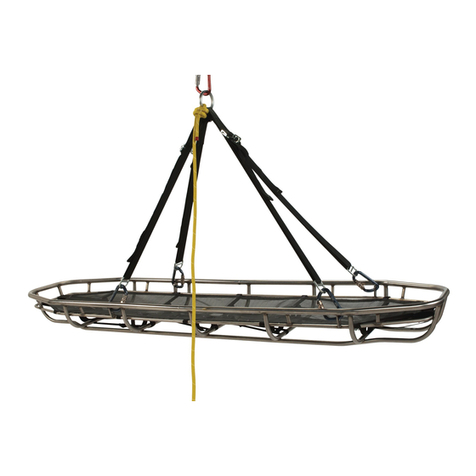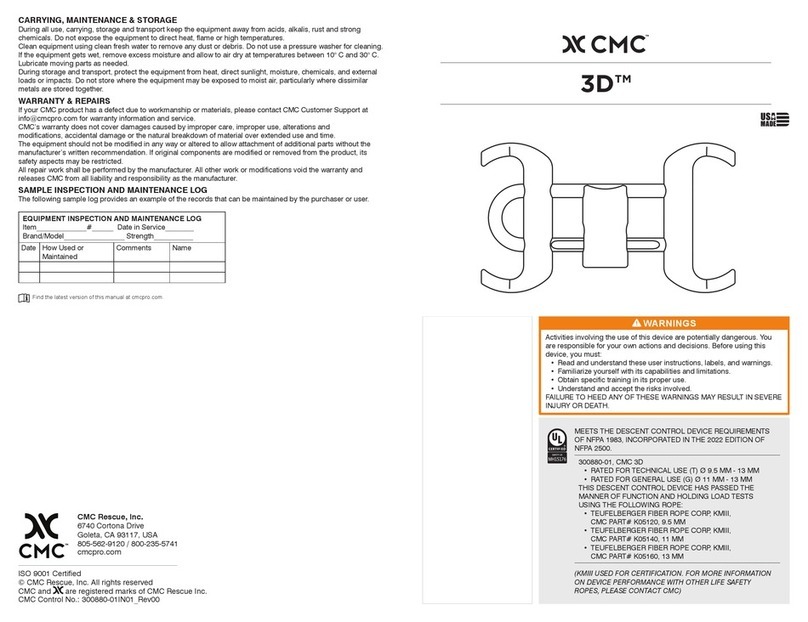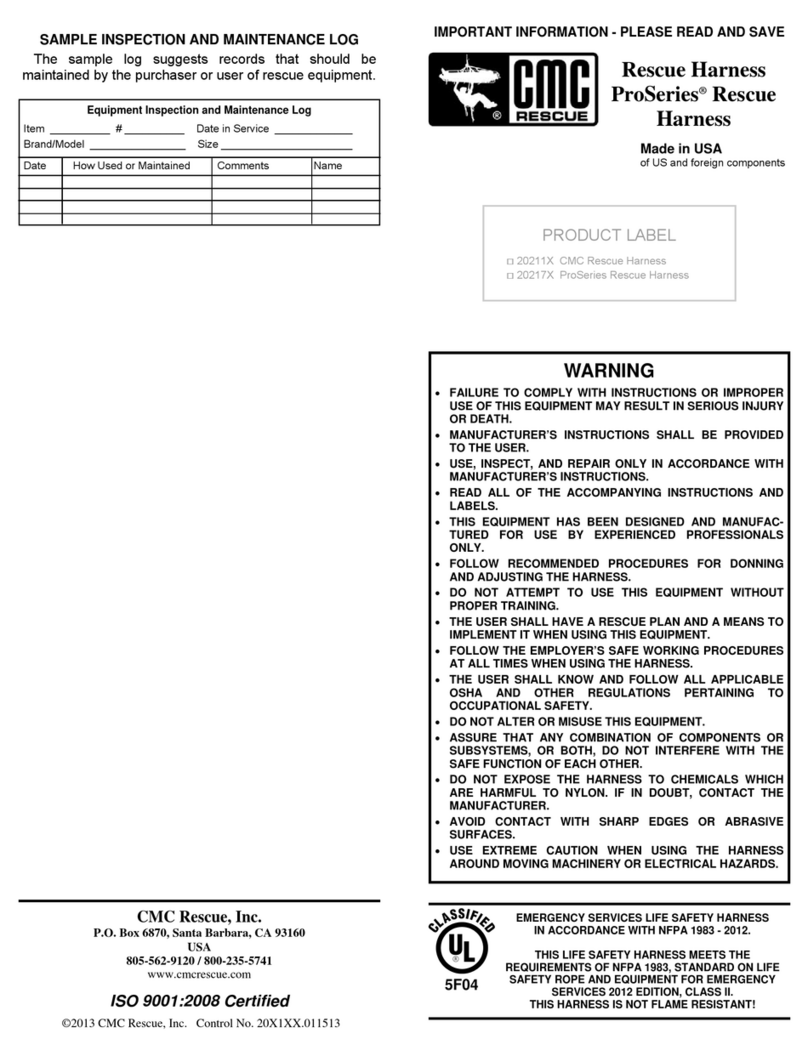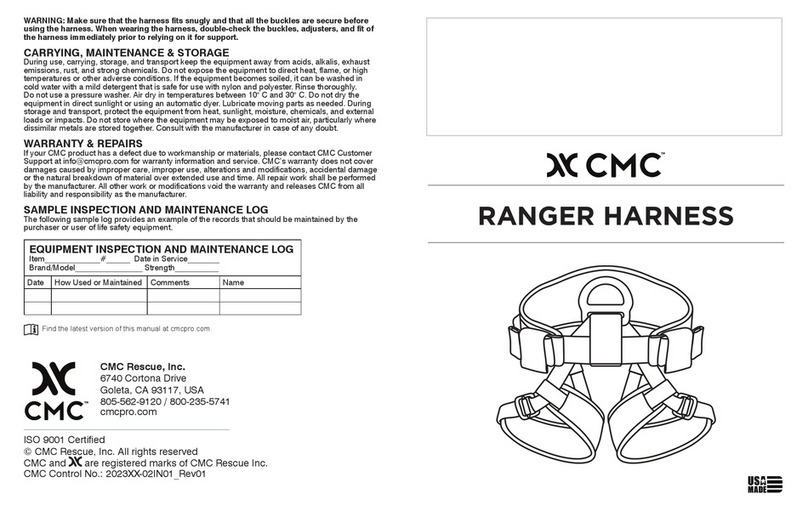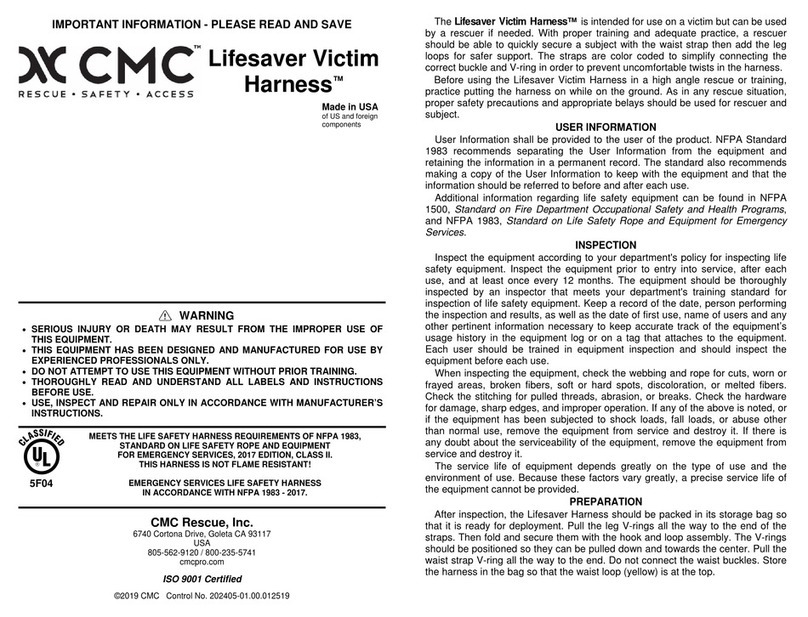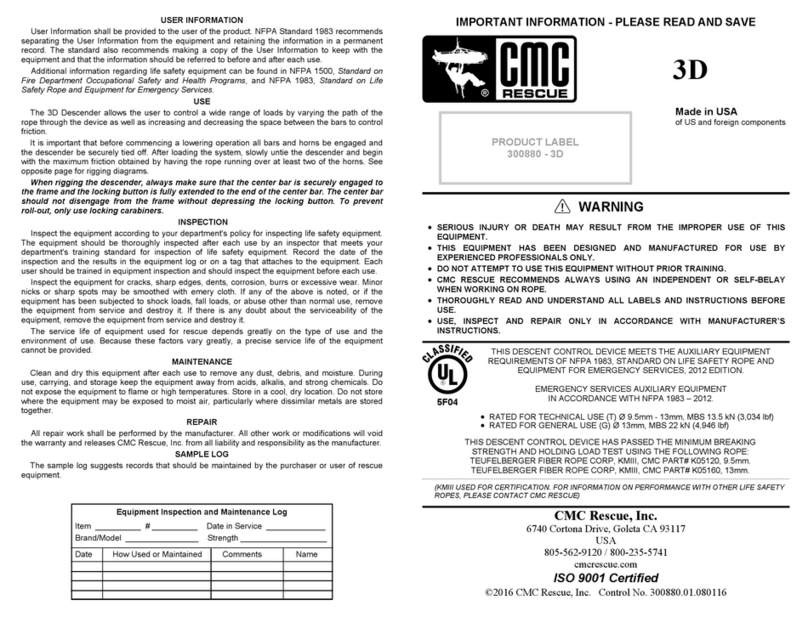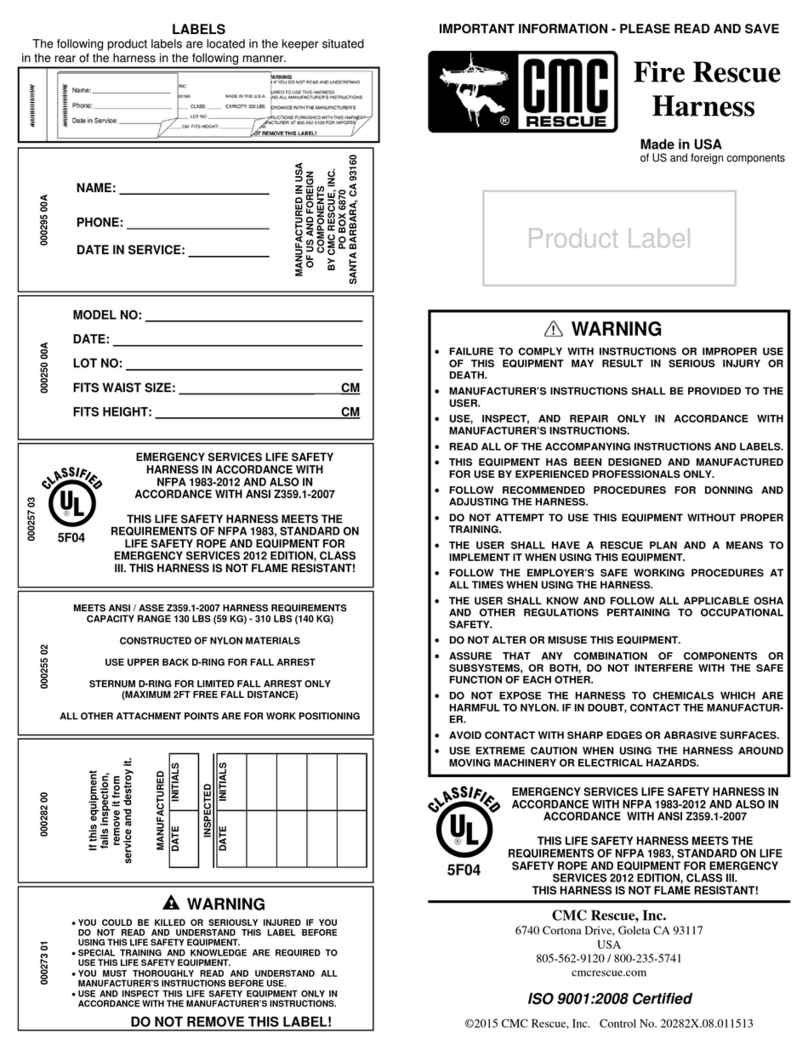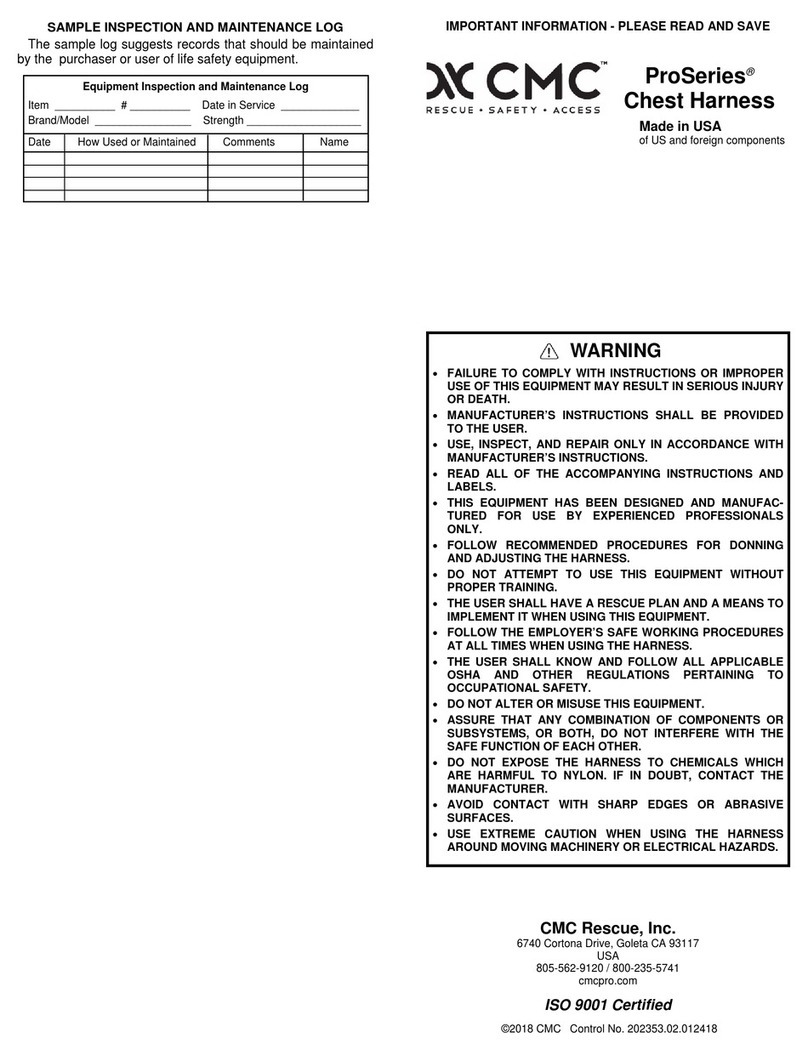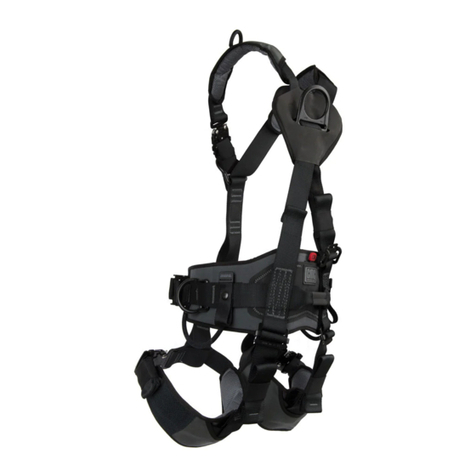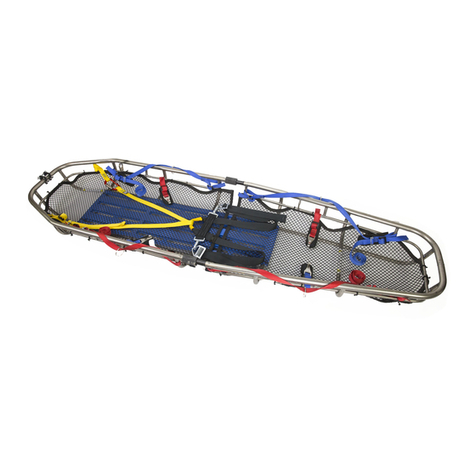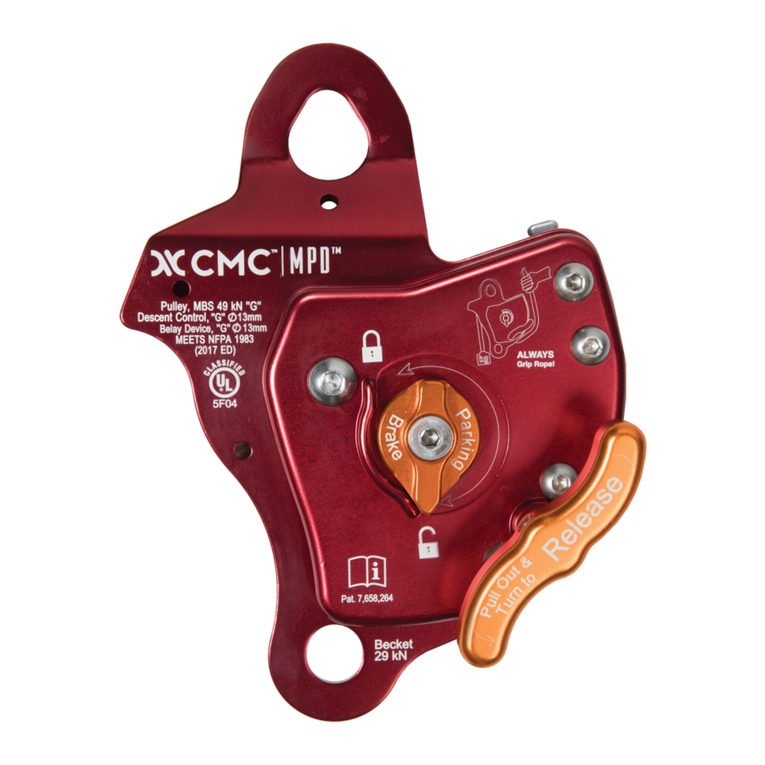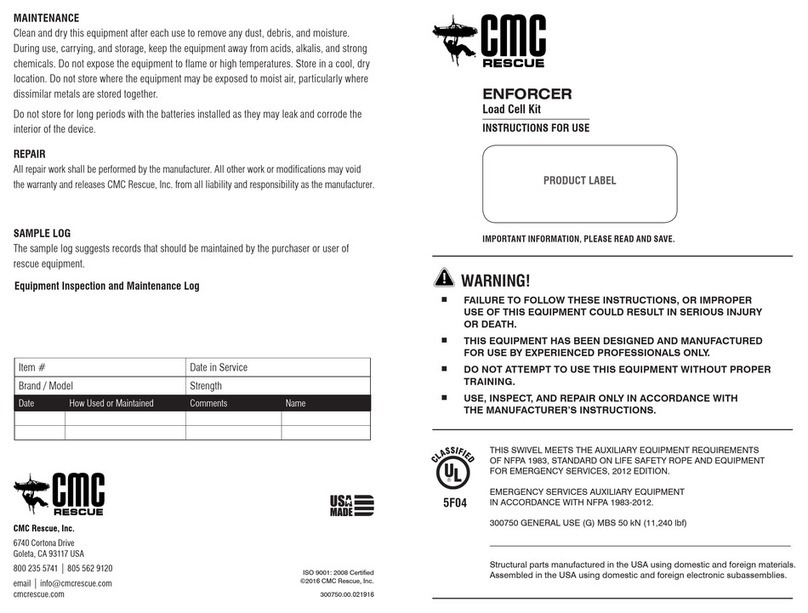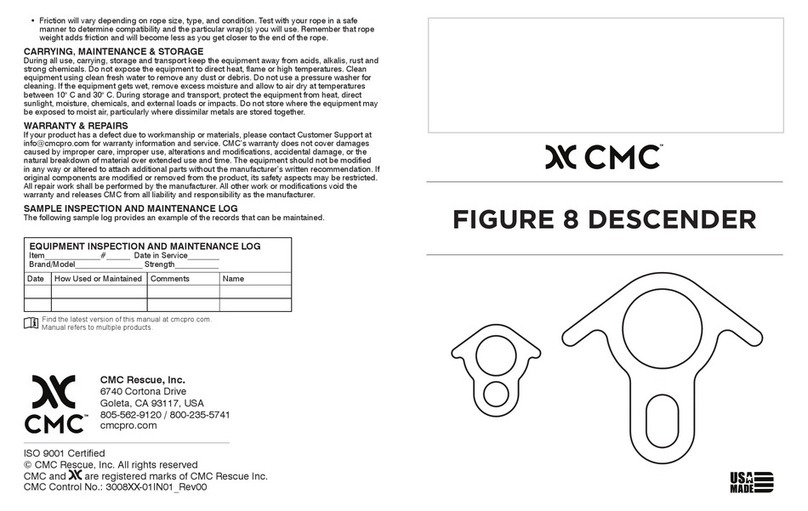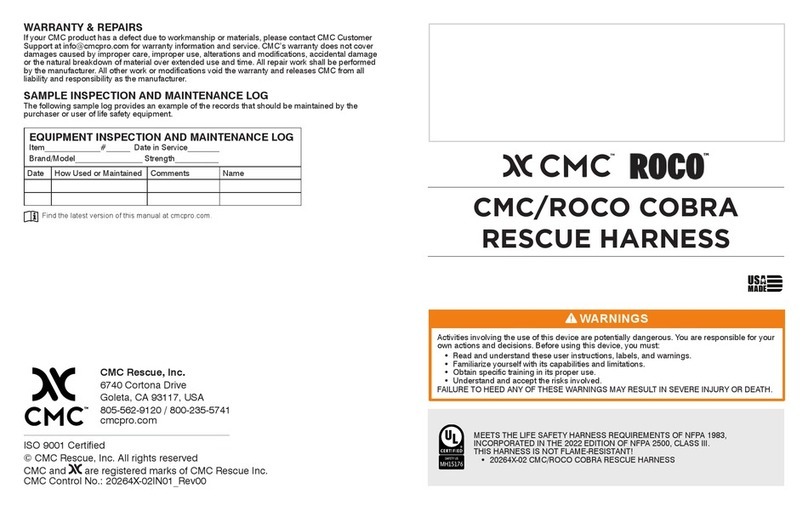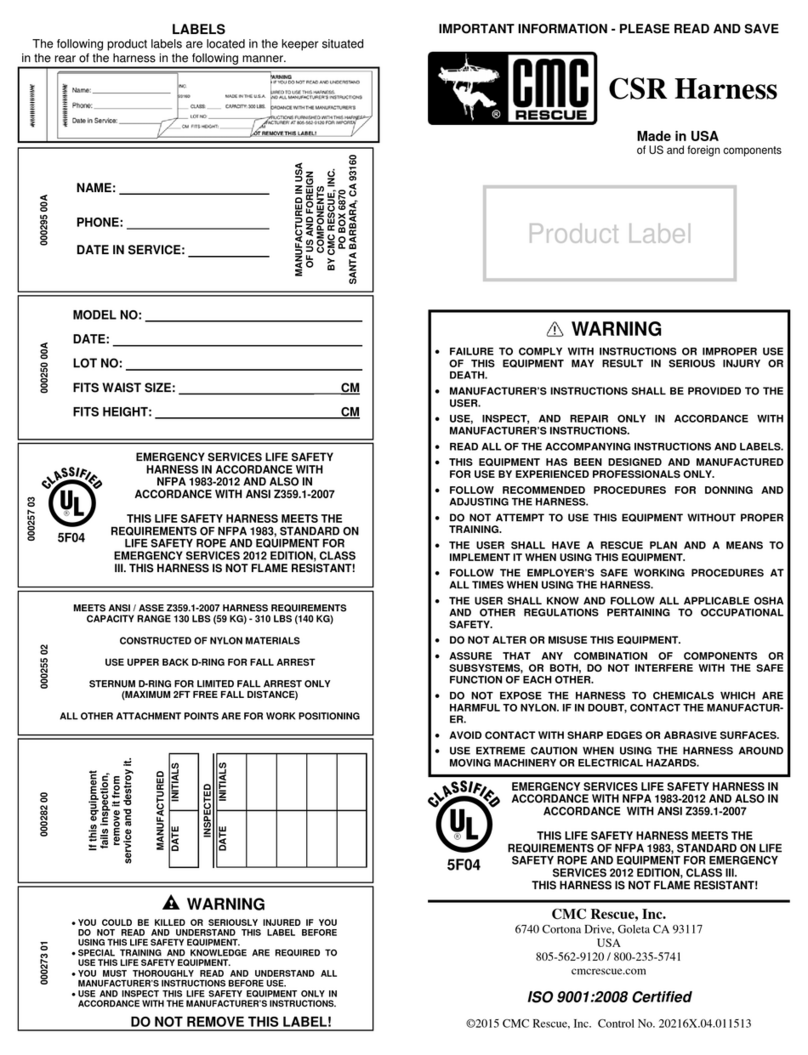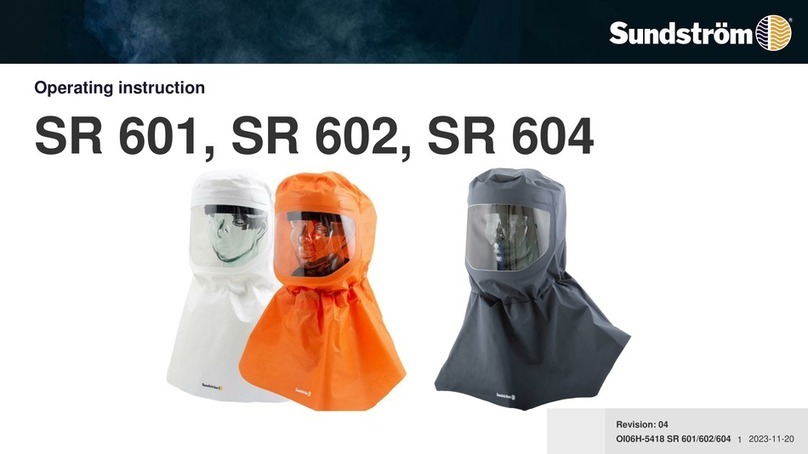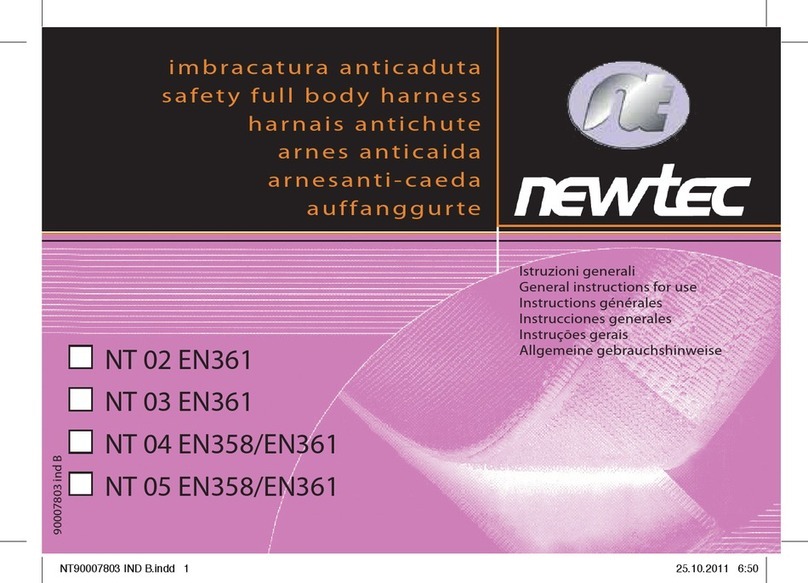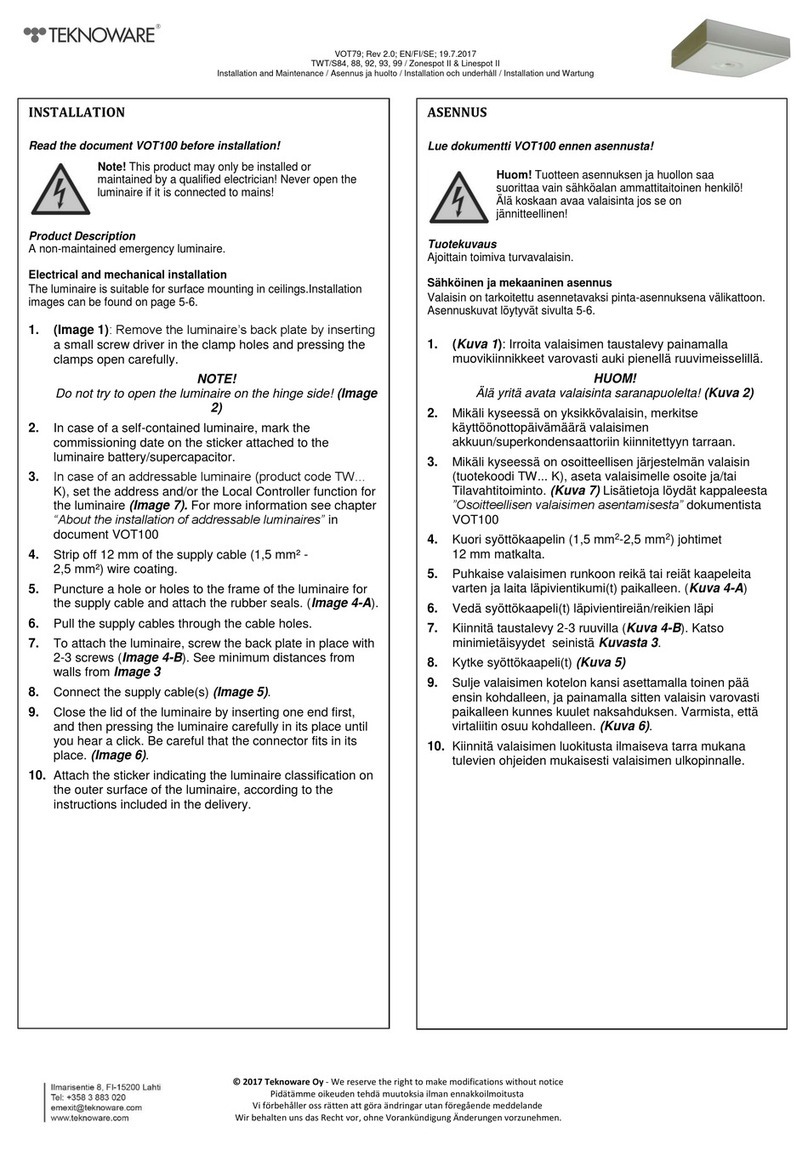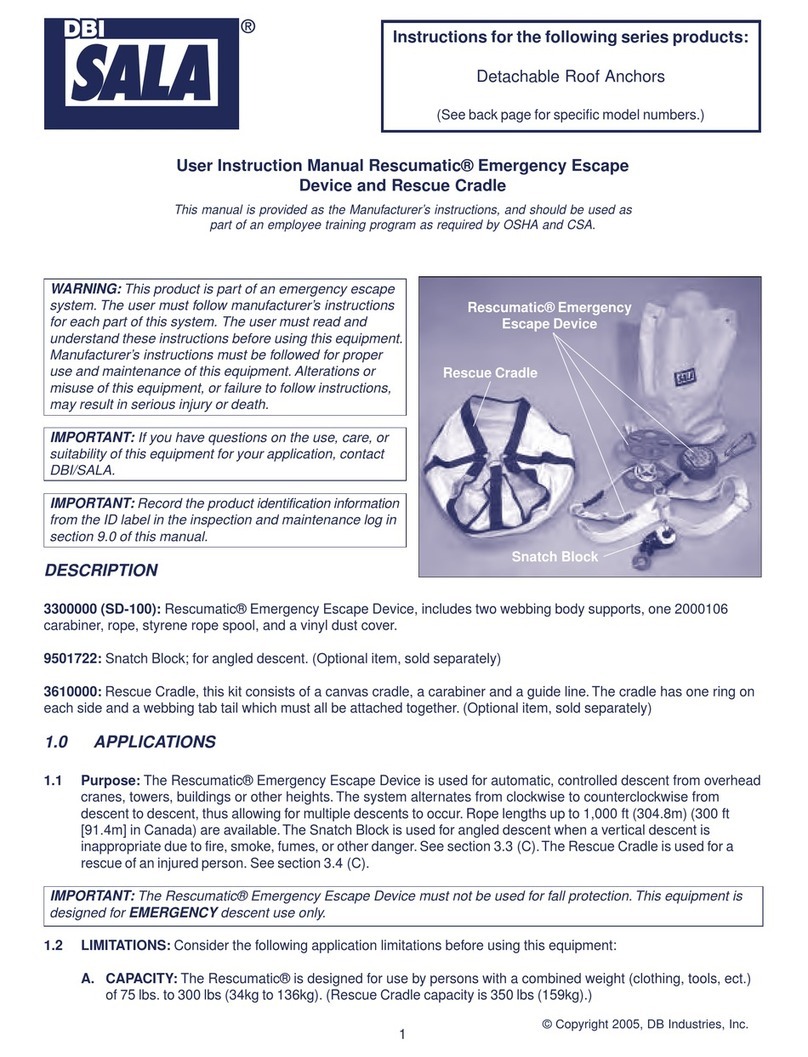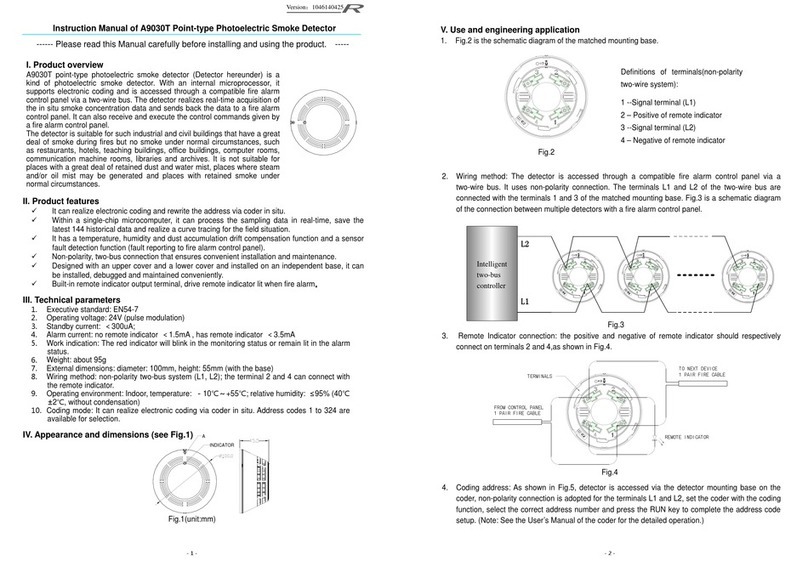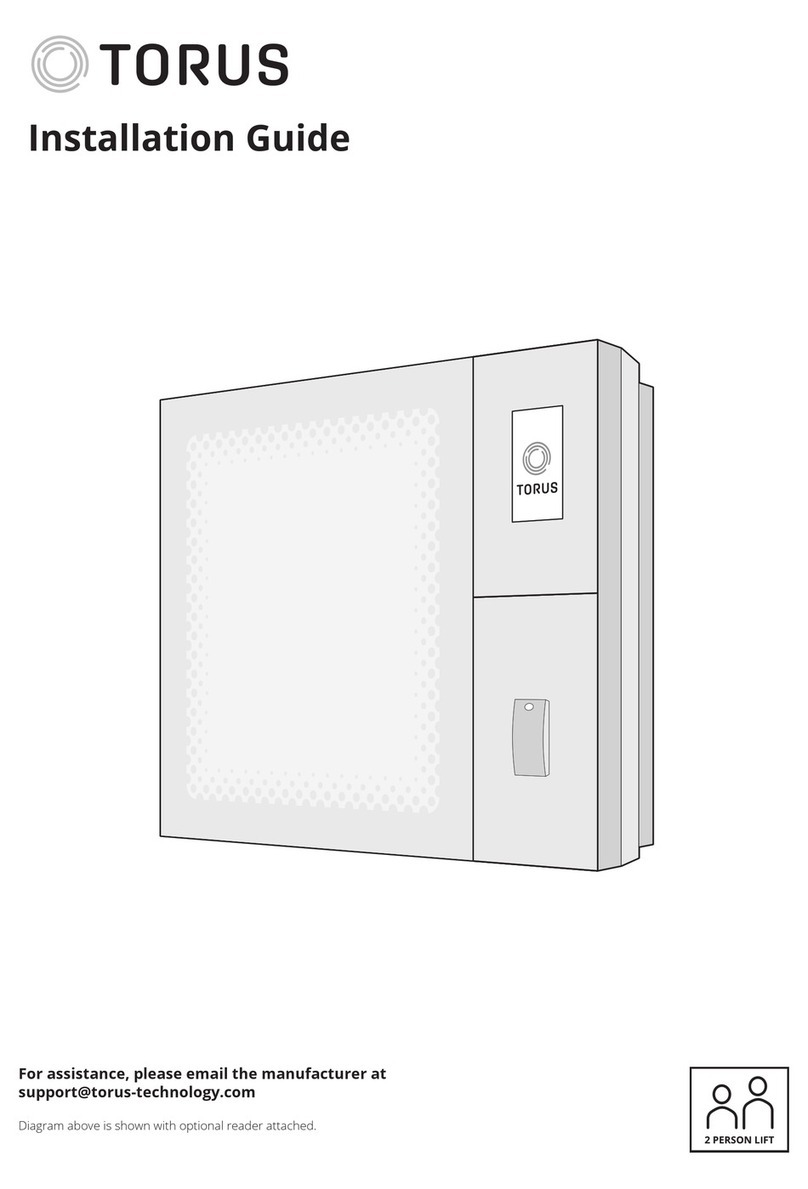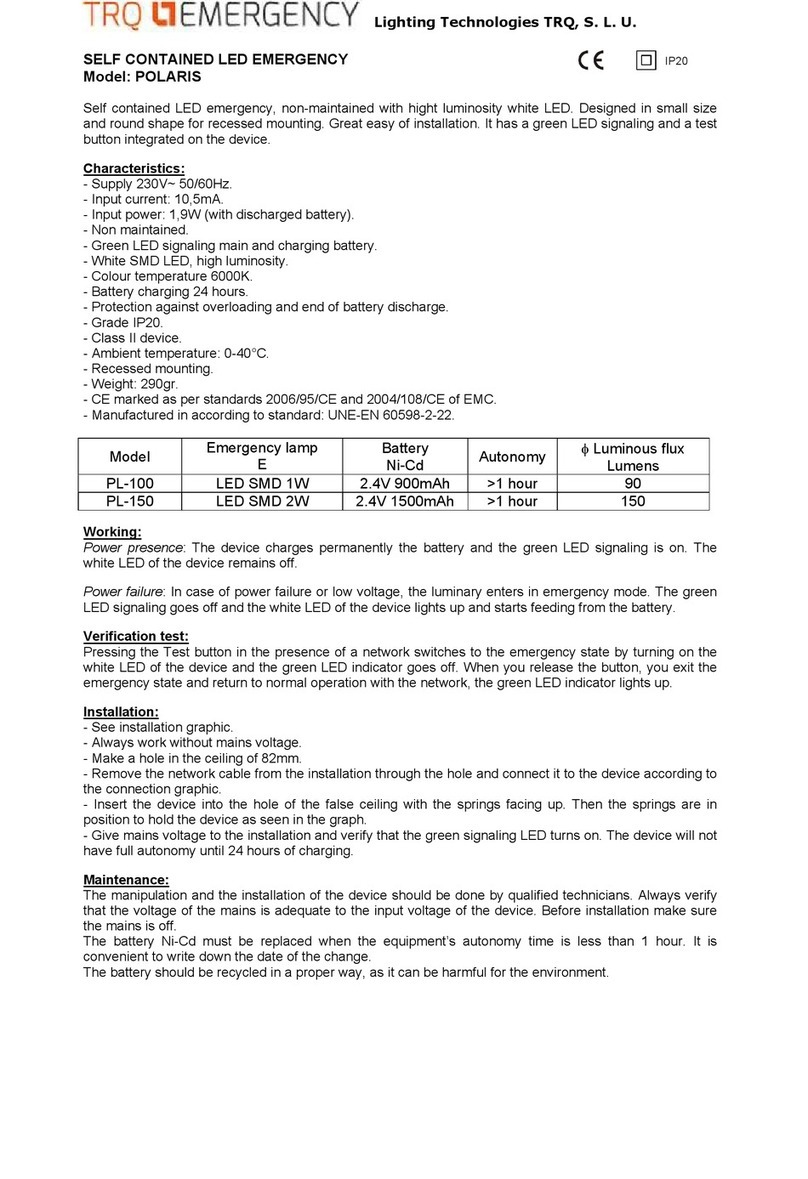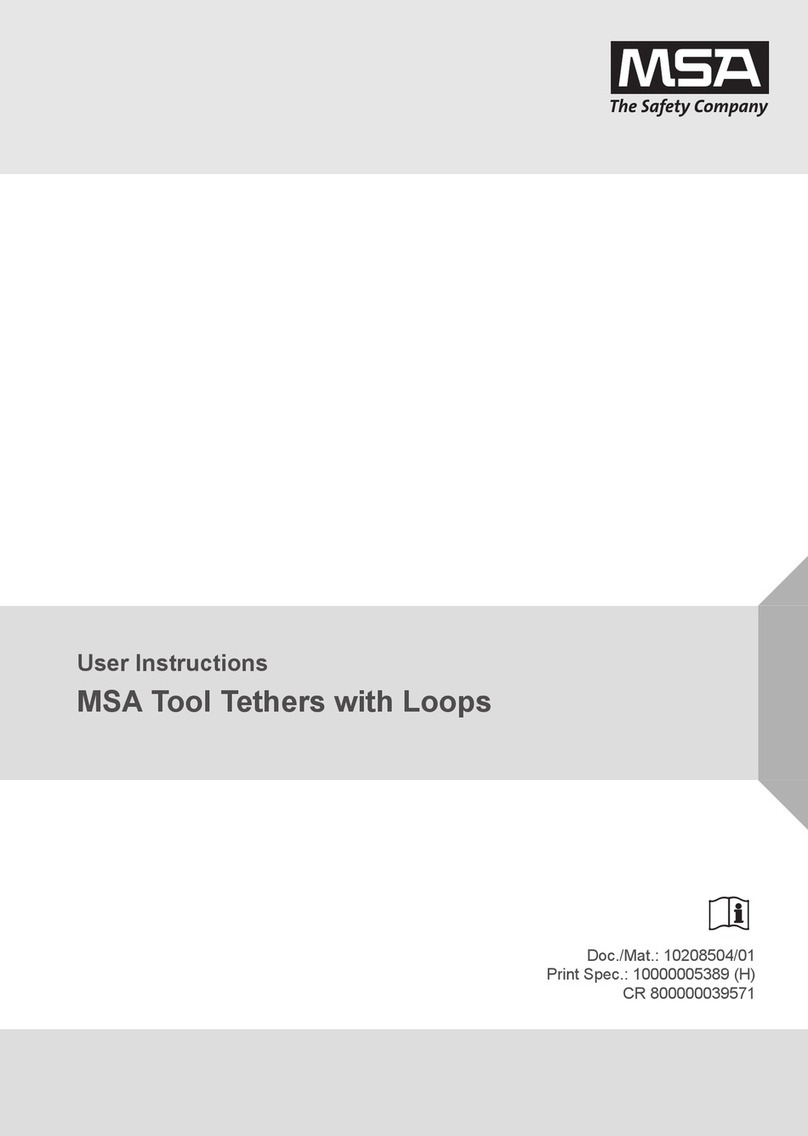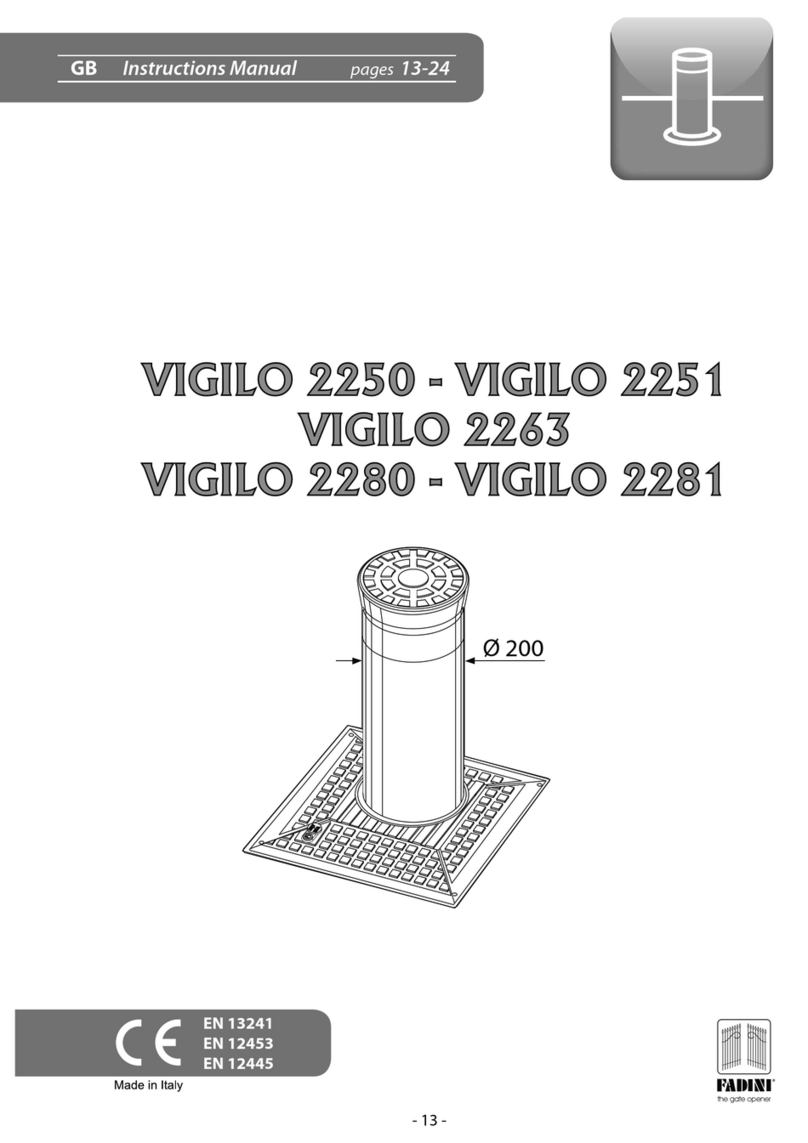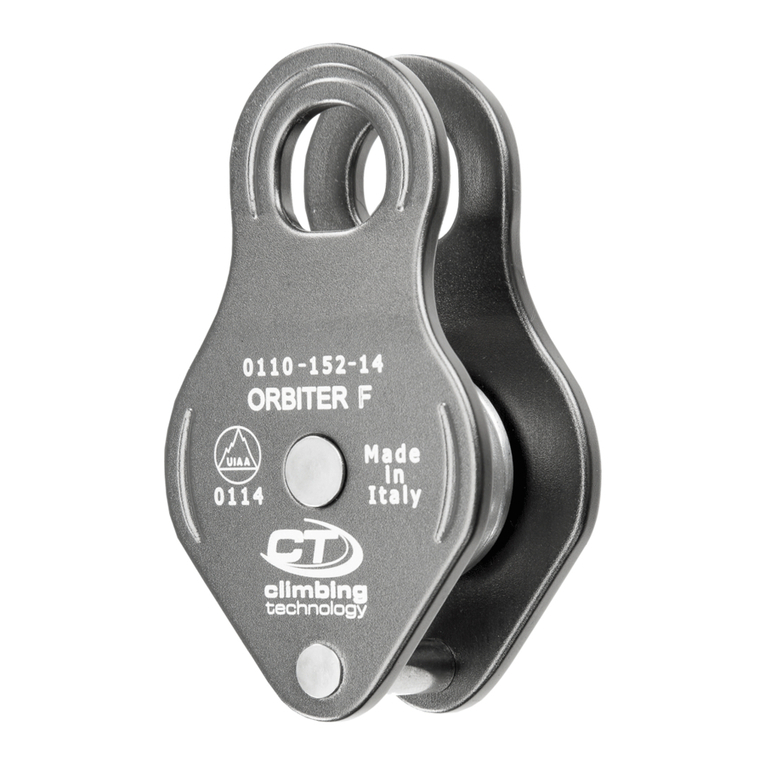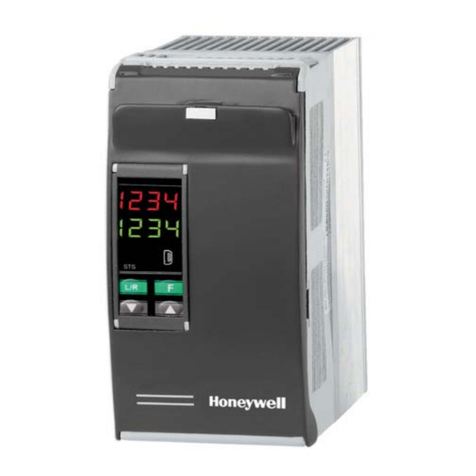
USER INFORMATION
User Information shall be provided to the user of the product. NFPA Standard 1983 recommends separating
the User Information from the equipment and retaining the information in a permanent record. The standard
also recommends making a copy of the User Information to keep with the equipment and that the information
should be referred to before and after each use. Additional information regarding life safety equipment can be
found in NFPA 1500, Standard on Fire Department Occupational Safety, Health, and Wellness Program, and
NFPA 1983, Standard on Life Safety Rope and Equipment for Emergency Services.
INSPECTION
Inspect the equipment according to your department’s policy for inspecting life safety equipment. Inspect
the equipment prior to entry into service, after each use, and at least once every 12 months. The equipment
should be thoroughly inspected by an inspector that meets your department’s training standard for inspection
of life safety equipment. Keep a record of the date, person performing the inspection and results, as well as
the date of rst use, name of users and any other pertinent information necessary to keep accurate track of
the equipment’s usage history in the equipment log or on a tag that attaches to the equipment. Each user
should be trained in equipment inspection and should inspect the equipment before each use.
Inspect the equipment for cracks, sharp edges, dents, corrosion, burrs or excessive wear. Minor nicks or
sharp spots may be smoothed with emery cloth. If any of the above is noted, or if the equipment has been
subjected to shock loads, fall loads, or abuse other than normal use, remove the equipment from service and
destroy it. If there is any doubt about the serviceability of the equipment, remove the equipment from service
and destroy it. The service life of equipment depends greatly on the type of use and the environment of use.
Because these factors vary greatly, a precise service life of the equipment cannot be provided.
LIMITATIONS AND PROPER USE
All carabiners are designed to specic performance criteria. Be aware of load limitations, manner used, and
proper technique. Do not overload a carabiner. Carabiners can fail under improper use conditions such as
cross loading, gate open loading, loading other than major axis, applying a shear or torsional load to the
carabiner, etc. If you are not sure of proper application or technique, seek proper training in carabiner use and
technical rope application.
To remove the keeper pin (for models so equipped), use the supplied hex wrench to remove the set screw,
then pull the pin completely from the carabiner frame. To reinstall, insert the keeper pin through the hole in
the gate side of the frame, then ensure the pin is fully seated in the blind hole in the spine side of the frame.
Reinstall the set screw, taking care not to overtighten and stripping the threads or head. Use a thread locker to
ensure the set screw does not back out during use.
CARRYING, MAINTENANCE & STORAGE
Clean and dry this equipment after each use to remove any dust, debris and moisture. During use, carrying
and storage keep the equipment away from acids, alkalis, rust and strong chemicals. Do not expose the
equipment to ame or high temperatures. Store in a cool, dark, dry location. Do not store where the equipment
may be exposed to direct sunlight or moist air, particularly where dissimilar metals are stored together.
REPAIR
All repair work shall be performed by the manufacturer. All other work or modications void the warranty and
releases CMC from all liability and responsibility as the manufacturer.












